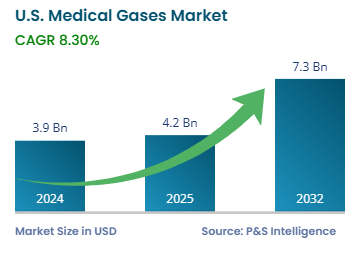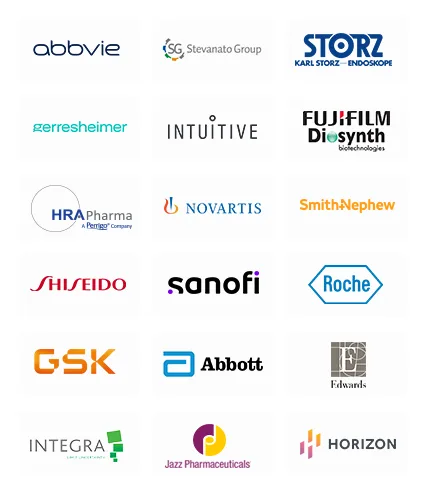U.S. Medical Gases Market Dynamics
Adoption of Advanced Respiratory Therapies Is a Key Trend
Many patients with breathing problems are getting better medical care through a treatment method that does not use invasive techniques yet needs high oxygen levels. With HFNC being increasingly performed, the need for medical gases, especially oxygen, continues to rise.
Moreover, doctors and people now use HBOT more often For faster wound healing and fighting specific infections, propelling the demand for high-purity oxygen.
In January 2023, the American Journal of Respiratory and Critical Care Medicine stated that stable hypercapnic COPD is less likely to exacerbate by administering LTOT with high-flow nasal cannula.
Rising Prevalence of Chronic Respiratory Diseases Is Primary Growth Driver
The growing number of people with COPD, asthma, and sleep apnea drives the market. As per the Asthma and Allergy Foundation of America, 25 million people in the country suffer from this chronic respiratory condition. Similarly, the American Sleep Apnea Association pegs the prevalence of this condition in the country at 22 million people. Hence, the growing number of people with respiratory conditions push up the demand for oxygen and medical air.
Moreover, this drives the number of people receiving LTOT at home and outpatient settings. Many patients with COPD, which accounts for a patient pool of over 14 million, now prefer to receive LTOT at home because it eases hospitalization pressure, supports independent living, and drives down the cost of care.
Further, over 51 million surgeries are performed in the country each year, the vast majority being traditional open procedures. Because of their complexity and the excruciating pain they cause, patients are generally anesthetized. This drives the demand for mechanical ventilation as general anesthesia makes people incapable of breathing themselves, by leading to almost complete paralysis.
In October 2024, Air Liquide announced that it would invest USD 150 million to enhance its Tennessee plant capabilities under a partnership with LG Chem.
High Cost and Regulatory Pressure Are Major Challenges
Medical gases are expensive to produce, especially those that are needed to be highly pure. The expenses for purchasing raw materials and investing in machines, along with procuring energy and building infrastructure, raise medical gas prices. In addition, the regular maintenance of medical gas systems, such as oxygen concentrators and cryogenic devices, affects daily operating costs for healthcare systems.
Medical gas delivery faces difficulties with reimbursements from health insurance and federal programs, including Medicare. Healthcare providers and their patients may feel financial pressure if reimbursement payments fall short of covering all medical gas supplies.
Medical gases also face strict safety rules because they affect humans directly. The FDA watches over medical gas quality and safety, while OSHA defines safety requirements that must be followed at patient care facilities. In June 2024, the FDA publishes the final rules for medical gases related to modernized manufacturing standards and new reporting and labelling requirements, while adding product certification criteria.




